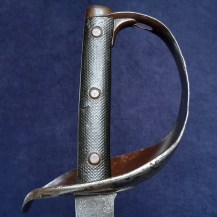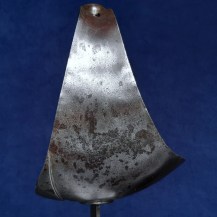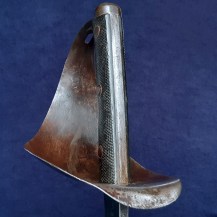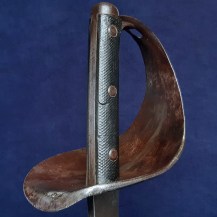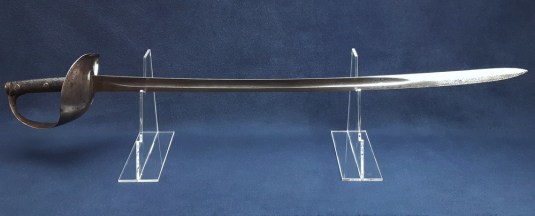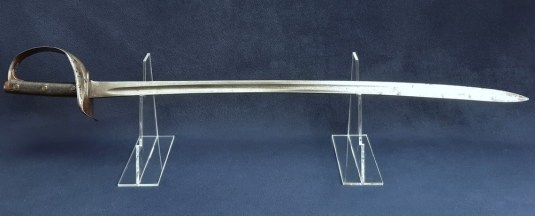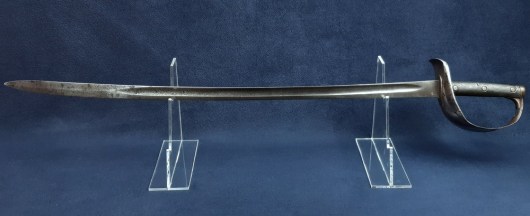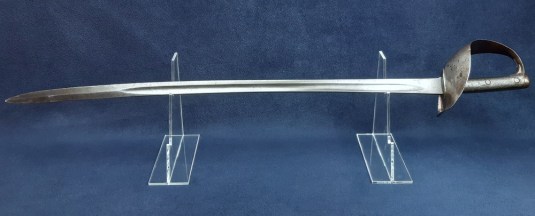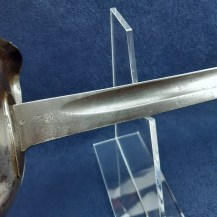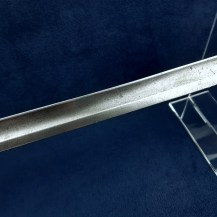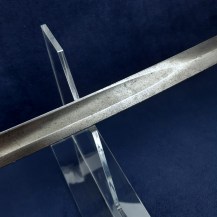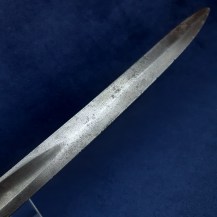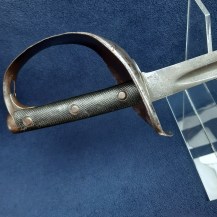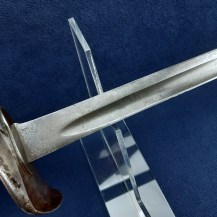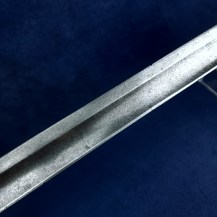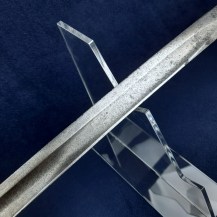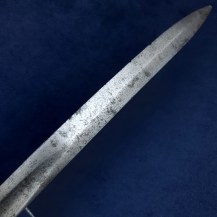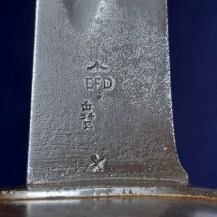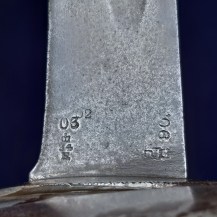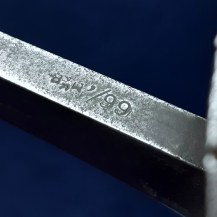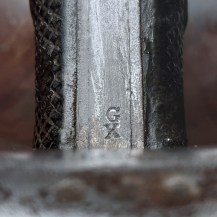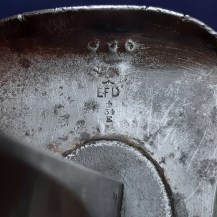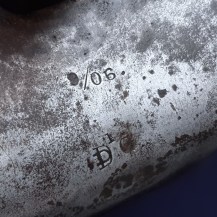British 1899 Pattern Cavalry Trooper’s Sword, 1st King’s Dragoon Guards
Curved single-fullered sabre blade, Steel bowl guard with turned-over inside edge. No washer. Black pressed leather grips secured to the exposed full-width tang with three large rivets, steel pommel. No scabbard.
Blade ~33¼ inches (85.6cm) in length, the sword ~40 inches (101.7) overall.
The ricasso of the blade is stamped on one side with a broad arrow War Department mark, ‘EFD’ indicating manufactured at the Royal Small Arms Factory at Enfield, a crown inspection stamp with ‘E’ for Enfield and an ‘X’ indicating the blade passed a manufacturer’s bending test. It is stamped on the other side with reissue dates of ’02, ’03 and ’06 and two further Enfield crown inspection stamps. The spine of the blade is stamped with ‘/99’, its pattern, and another Enfield crown inspection mark. The exposed tang is stamped near the hilt with the letters ‘G’ and ‘X’.
The outside of the guard is stamped with another broad arrow, ‘EFD’ and crown inspection stamp with ‘E’. The inside of the guard is stamped with the issue date ‘9 06’ for September 1906 above the unit mark ‘1 DG’, indicating the 1st King’s Dragoon Guards and the serial number ‘413’. The ‘D’ has been double stamped creating an overlap.
The 1899 Pattern cavalry trooper’s sword was introduced on the 19th October 1899, eight days after the Second Boer War broke out. It was intended to be a refinement on the 1890 Pattern, with a slightly shorter blade, greater protection for the hand and a longer grip. Users generally considered it on the heavy side and much more effective in the thrust than the cut: this cemented the growing consensus that cavalry swords should be built entirely for thrusting.
The 1899 Pattern was carried during the Boer War, in which the 1st King’s Dragoon Guards served from January 1901. Immediately upon their arrival they were drafted into a brigade under Colonel Bethune which drove General De Wet’s forces out of the Cape Colony. They then operated in the Orange River Colony until the end of the war in 1902. The dates on this example suggest that it was in use with someone as of 1902, and the brown finish found in places on the hilt might well be field camouflage, but the 1906 date next to the unit mark suggests to me that it was not issued to the KDG until then, so its war service is uncertain.
The blade has speckled patination with some patches of light pitting, increasing towards the tip. The edge has previously been sharpened with numerous nicks. The tip is rounded. The outside of the hilt has some denting, a few scratches, cleaned pitting and spots of dark patination. There is a noticeable red-brown finish present on most of the inside of the hilt (except near the lip where the unit mark is placed), parts of the exposed tang, and on small areas of the outside of the hilt, including around the sword knot slit and near the turned-over inner guard – in both cases these are recesses where there would be less friction and polishing would be difficult. This finish may be chemical browning, it does not appear to be paint. Cavalry swords in the Boer War were routinely camouflaged due to the well-known marksmanship of the Boers. The leather grips have light handling wear, a few small dents and abrasions.


